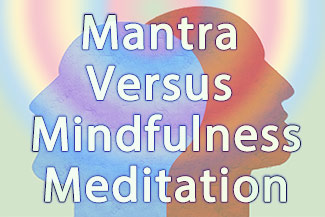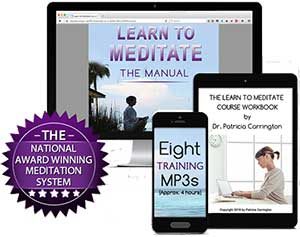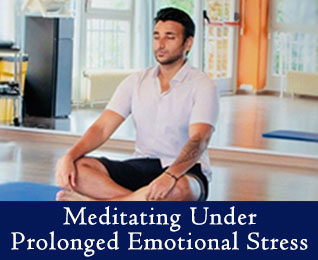 About Mindfulness Meditation
About Mindfulness Meditation
In “mindfulness meditation,” a Buddhist-derived method, practitioners develop the skill to observe clearly what is happening to themselves and their surroundings, moment to moment. In doing this they learn to distinguish their reactions to what they are experiencing – thoughts or feelings about it – from the raw sense impressions. People practicing mindfulness meditation become witnesses to the entire array of thoughts and feelings that pass through their mind. They are taught to note the contents of their mind without identifying with or reacting to any of it.
While this process can be extremely rewarding for those willing to undertake the discipline required, it demands considerable training to absorb the fundamentals and their applications to daily life, and is not for the faint of heart.
In many ways, mindfulness meditation is more of a life-style than a technique. It is associated with values such as self-responsibility, self-observation, emphasis on non-striving, a non-judgmental stance toward present-moment experience, conscious exercise of kindness in support of one’s own and others’ effort, and adoption of a long-term perspective on one’s own personal mindfulness practice. Teachers of this method emphasize that mindfulness meditation is a way of being rather than a technique to be practiced to achieve immediate ends.
In this respect it differs from the standardized meditation techniques described here, which are less demanding and therefore applicable to many more people.
Research has shown that a stress-reduction program based on mindfulness meditation can be highly beneficial for many medical conditions as well as helping to improve the participants’ sense of well-being. Because only a certain type of person is drawn to this form of meditation, however, research findings concerning it cannot be applied widely to the public because many people may be unable or unwilling to submit to its requirements.
For this reason, it should be kept in mind that it is less applicable to the general population than some other techniques. Research on this method is often quite innovative, however, and can provide some important insights.
More recently, some new research on mindfulness (and other forms of) meditation that is certainly worth consideration:
Study shows a brief mindfulness meditation exercise results in subdued moral reactions
Where, then, is the stand with respect to the similarities and differences, the ease and difficulty of the various forms of practical meditation? The answer may be that you will have to judge for yourself how you, or your children, may respond to a particular form of meditation.
“Mindfulness” mediation is infiltrating schools and organizations, everywhere. “Some Buddhist meditation teachers have voiced concerns that mindfulness meditation, isolated from its traditional guiding context of the Path, could be more unpredictable and possibly dangerous.“
About Clinically Standardized Meditation (CSM)
My meditation program is not meant to “numb” any individual from experiencing and expressing our natural human tendencies to feel emotions of compassion, empathy, and full engagement with one’s surroundings. I teach a type of mantra meditation, Clinically Standardized Meditation (CSM), which has much in common Transcendental Meditation (TM). I also teach Woolfolk’s breathing meditation, which is much like Benson’s technique. CSM is a modern form of meditation that has been widely used, both in clinical practice to support psychotherapy, and as a self-taught method to create profound individual personality and life changes. Unlike TM, or other forms of meditation, CSM, has no ceremonious or pre-conceptive goals, rather the meditator makes preparations to create a quiet space in which to relax and repeat a short, personally selected, standardized soothing sound, a “mantra.”
CSM is, ultimately, a non-directive form of meditating that is remarkably effective in bringing about profound positive changes in the meditator and it is very safe and simple to use. Furthermore, its beneficial effects have been widely supported by research. It is not based upon any religion or strict protocol.
With the CSM instruction, you can experience both mantra and breathing meditations to see how each feels for you, your family, and what comfortably compliments your goals for a meditative experience.
Learn to Meditate with CSM







